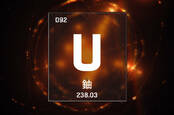This article is more than 1 year old
Chinese boffins suggest launching nuclear Neptune orbiter in 2030
All these worlds are yours, except Europa. Attempt no landing there. Use them together, use them in peace
Scientists at top universities in China propose sending a spacecraft powered by nuclear fission to orbit Neptune – the outermost planet in our solar system – in 2030.
Astronomers have not yet been able to look at Uranus and Neptune in much detail. The best data collected so far comes from NASA's Voyager 2, the only spacecraft to have flown by the big blue orbs way back in 1986 and 1989.
Now, Chinese academics believe it may be possible to launch a spacecraft to orbit Neptune.
The challenges involved are considerable. The outer solar system is cold, dark, and cruel. Spacecraft flying far from the Sun cannot rely on solar power, and need other sources of energy to maintain steady orbits and keep their instruments from freezing.
Radioisotope thermoelectric generators (RTGs) have been employed on more than 30 missions to provide spacecraft with heat and fuel. They work by converting heat from the radioactive decay of a suitable fuel, such as plutonium-238, into electricity.
To operate out by Neptune, however, a probe will need a little more oomph from an RTG – a nuclear fission reactor capable of generating 10kWe (kilowatt-electric), according to a paper published in Scientia Sinica Technologica.
As a side note, we recall the US experimented with a fission reactor dubbed the SNAP-10A in Earth's orbit in the 1960s. There have been other fission systems designed for space.
The Chinese authors envisioned a spacecraft with a mass up to 3,000 kilograms powered by a nuclear fission reactor at one end. It would also carry four smaller satellites – two to study Neptune's atmosphere and another two to probe Triton, its largest moon, The Planetary Society first reported. Triton is an odd object – it orbits in the opposite direction to its host planet, is geologically active, and may harbor liquid oceans beneath its icy crust.
The best time to launch such a spacecraft would be 2030, the scientists reckoned. It could fly aboard China National Space Administration's Long March 5 rocket, and would reach Neptune a decade later after flying by the gas giants Jupiter and Saturn.
NASA is also exploring the idea of probing Neptune and described flagship-class missions in previous reports. Last week, it announced it had awarded one-year contracts worth $5 million to three companies to develop and test a nuclear fission reactor on the Moon by 2030.
Studying the ice giants will give astronomers a better understanding of how the Solar System formed and evolved over 4.5 billion years.
Chinese president Xi Jinping previously declared: "To explore the vast cosmos, develop the space industry and build China into a space power is our eternal dream." ®

